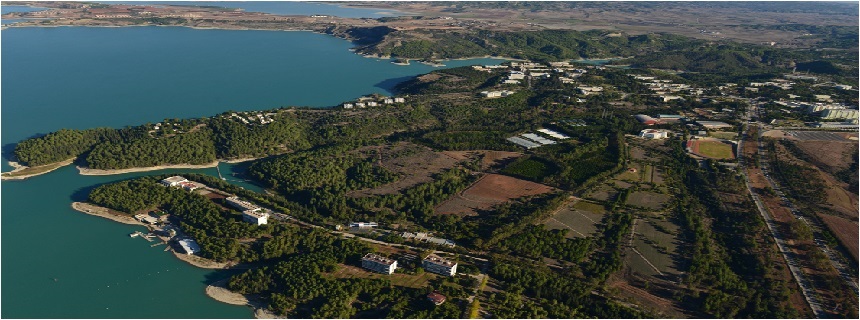The Çukurova University Botanical Garden, Turkey
- Ayrıntılar
- Üst Kategori: ROOT
- Kategori: Botanic Gardens
The Çukurova University Botanical Garden, Turkey
Prof. Dr. Erdogan Gültekin
The first attempt to set up a botanic garden in Turkey was in about 1949 with the establishment of an Arboretum in Bahçeköy near Istanbul with the support of the University of Istanbul Faculty of Forestry. In spite of the rich biodiversity and high number of species both in flora and fauna in Turkey, the number of botanical gardens are quite few.
Early initiatives for a botanical garden at Çukurova University took place in 1972. . Some activities such as corresponding with some foreign countries were carried out by the Department of Landscape Architecture between 1973-1978. After collecting a variety of plant seeds from different countries and also from the mainland, some successful results were obtained with some outdoor plants such as Bauhinia variegata, Parkinsonia aculeata, Duranta repens and Cassia tomentosa which gave impetus for the development of a botanic garden.
In 1994 an evaluation and advisory committee with 12 members was formed to develop new strategies and policies which met twice a year. At the same time a planning and project team with 6 members mainly from the Department of Landscape Architecture was organized and a Master Plan was drawn in accordance with natural, edaphic and climatic conditions and the needs and interest of the public.
General Features
The botanic garden is located in south-eastern Turkey. The Çukurova area is 20 meters above sea level and only 40 kilometers to the north of the Mediterranean Sea; it is surrounded by the chain of Taurus Mountains which reach up to 300 meters. The Garden has a total area of 200 acres. The most spectacular part of the Botanic Garden is the Maquis (Macchia) and the Native Plant Garden.
Maquis (Macchia) and Native Plant Garden
With an area of 100 acres, this garden consist of native plants that unique to region. The garden is situated in a wide valley from the south to the north west part of the botanic garden. Some woody maquis elements are listed below:
Quercus coccifera, Calicotome villosa, Pistacia terebinthus, Phillyrea latifolia, Erica manipuliflora, Daphne sericea, Lithodora hispidula, Cistus creticus, Rhamnus oleoides, Smilax aspera, Osyris alba, Crateagus monogyna, Myrtus communis, Fontanesia phyllraeoides.
Nursery
The nursery of the botanic garden covers nearly 5 acres of which 150 m² is reserved for offices, laboratory and library. An area of 2 acres is added to the main site for maintenance work, with watering facilities. A small green house and screen house are being established in the nursery.
Projects have been started in parts of the garden, woody plants (trees and bushes) have been sown for research and collections have been planned for the coming period.
A work programme on the implications and practical work relating to plantation and dendrology lessons for the students from the Department of Landscape Architecture have been scheduled.
http://www.bgci.org/worldwide/article/0208/










